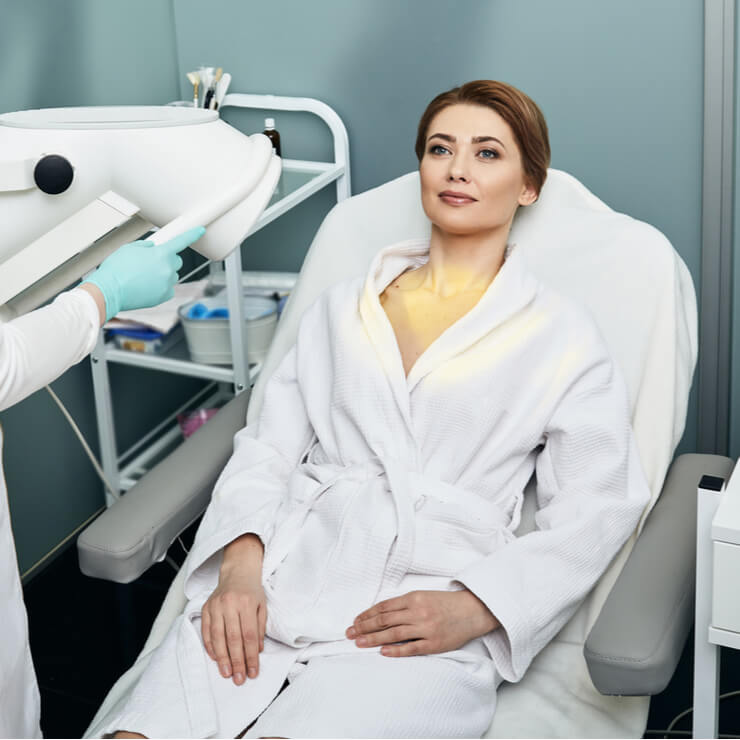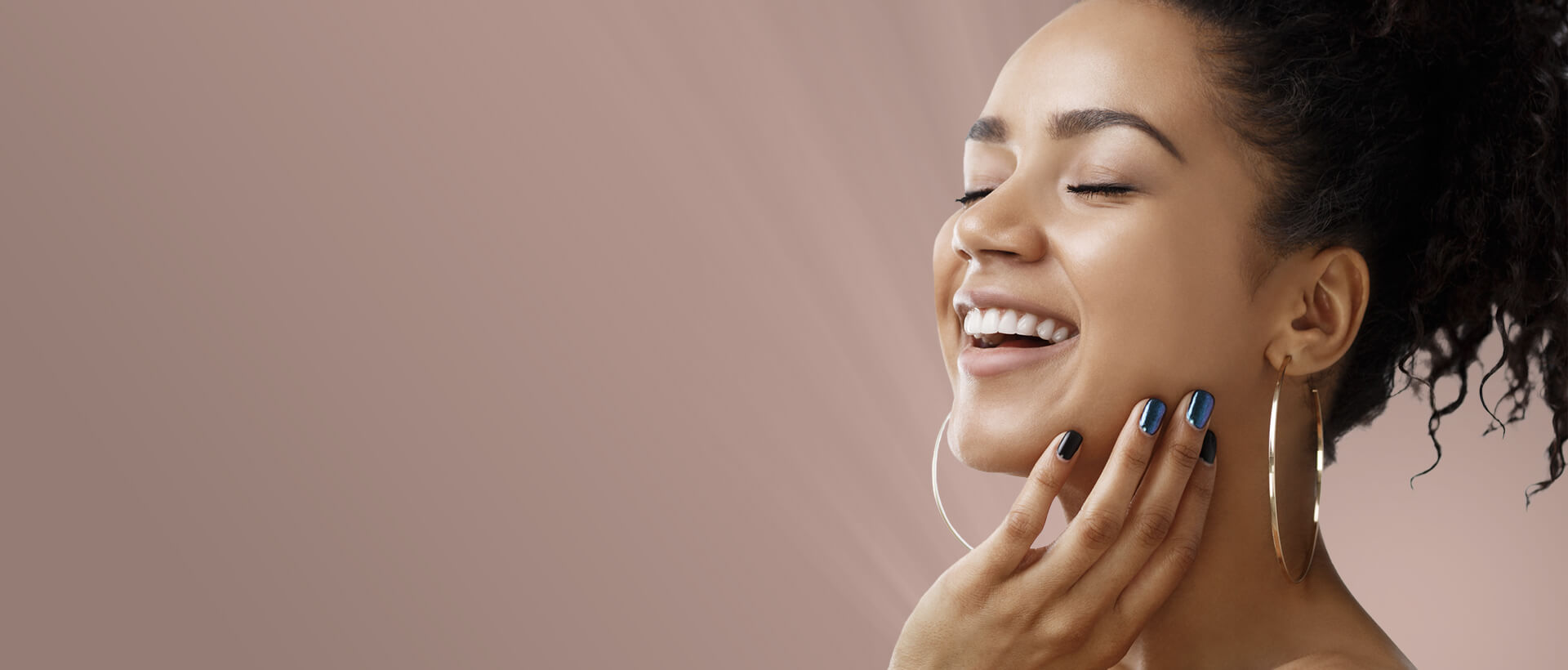
Photodynamic Therapy (PDT) San Francisco
Non Surgical Skin Rejuvenation in San Francisco, CA
With maturity comes wisdom, but also the telltale signs of aging, hormonal changes and years spent in the sun. This can take the form of fine lines, deeper creases, pigmentation, broken capillaries and precancerous spots. Photodynamic therapy (PDT) can address all these varied changes with one modality.
As the field of medical aesthetics continues to grow at a rapid pace, making the correct choice for your particular skin is more important than ever. The Appearance Care Center™ is dedicated to providing exceptional nonsurgical services like PDT for the face, body and skin in a spa-like setting. To discuss this state-of-the-art treatment with one of our licensed healthcare professionals, please schedule an appointment.

What Is Photodynamic Therapy (PDT)?
Photodynamic therapy (PDT) is a form of light therapy (phototherapy) performed with a topical photosensitizing agent and a light source. This procedure is done in two steps:
1. Your provider applies a photosensitizing solution
Your provider first applies a topical solution that makes your skin sensitive to light. Levulan Kerastick containing 20% aminolevulinic acid (ALA) is the most commonly used solution. After this solution is applied, it must sit on your skin for one to two hours so it can be absorbed. This is known as the incubation period.
2. Your skin is exposed to a light source
The treatment area is then exposed to a specific wavelength of light to activate the solution. When activated, chemicals in the solution destroy abnormal cells or bacteria that cause acne. The light exposure usually lasts around 15 minutes. Discomfort is generally mild for this procedure and no topical anesthetic is used.
After treatment, healing takes place within a week or two. During this period, it’s important to avoid sun exposure and use sunscreen and wear something to physically shield your face, like a hat when going outside.
What Is Photodynamic Therapy Used For?
PDT became popular after the discovery of photosensitizing drugs in the 1990s. Researchers found that these drugs can enhance the effects of certain wavelengths of light for the treatment of various skin conditions.
In dermatology, PDT is increasingly used for treating warts, pre-cancerous growths and even skin cancer. It’s also used to treat macular degeneration, mouth cancer and lung cancer.
In medspa settings like our Appearance Care Center™ in San Francisco, this procedure is mostly applied to the treatment of:
- Acne
- Cystic acne
- Acne scars
- Sun damage
- Hyperpigmentation
- Fine lines and wrinkles
Preparing for Your PDT Treatment
If you are scheduled for PDT at the Appearance Care Center™, your provider will let you know how to prepare your skin for the treatment. Please let us know if you have any allergies or are currently taking any medications, as these things may affect your suitability for treatment.
Plan to spend more than an hour with us on the day of your treatment. We may ask you not to apply any creams, lotions or makeup before you arrive. Prepare to avoid sunlight and bright indoor light completely for 48 to 72 hours after your procedure. Light exposure can cause stinging, burning and blistering for skin that is sensitive after PDT. To avoid sun exposure, we advise our patients to bring a wide-brimmed hat and a broad-spectrum sunblock for protection on their way back home.
Your skin may flake, peel or become crusty in the weeks after treatment. With this in mind, it may be a good idea to take time off work.

PDT Aftercare
Most patients respond to PDT with mild to moderate skin irritation. This is a natural reaction and a normal part of the healing process. Symptoms you are most likely to notice post-treatment include:
- Redness and mild swelling
- Crusty and scaling skin
- Tingling or pain
- Mild blistering
Discomfort can be managed with over-the-counter pain relievers like ibuprofen and aspirin. Applying cool (but not too cold) compresses can also help. Ointments like those from Cetaphil and Aquaphor can help keep your skin moist as it heals.
If you develop flu-like symptoms, such as a fever and body aches, call our office. These may indicate a more serious immune reaction or infection that you may need to manage with prescription antibiotics.
FAQs
Is photodynamic therapy safe?
PDT has no serious side effects when used properly and when followed up with good aftercare. A review of current literature on the use of PDT in the treatment of inflammatory acne found it to be safe and effective.
Can photodynamic therapy help with my acne?
PDT is more effective for inflammatory acne than for non-inflammatory acne. Patients experience up to a 68 percent decrease in acne 12 weeks after being treated with PDT.
Is photodynamic therapy painful?
PDT can and often does cause mild to moderate discomfort. Patients frequently feel burning or stinging during treatment. After treatment, the skin may feel like it’s slightly sunburned. Discomfort usually lasts only a couple of days post-treatment.
How long does photodynamic therapy take?
PDT takes roughly two hours. The longest part of the procedure is waiting for the photosensitizing solution to reach targeted cells. You may bring something to keep yourself entertained during this part of the treatment. The light therapy stage takes only around 15 minutes.
Can photodynamic therapy cause cancer?
There is no convincing evidence that PDT causes skin cancer. In fact, the procedure is used in the treatment of many non-melanoma skin cancers.
Is photodynamic therapy covered by insurance?
When used as a cosmetic procedure, PDT is not covered by insurance. Insurance companies will cover PDT only when used in the treatment of skin cancer and other medical conditions.
How much does photodynamic therapy cost?
PDT costs can vary depending on the concern being treated, size of the treatment area and number of sessions. We will calculate the total costs during your consultation so you can plan ahead.
Discover Advanced Light Therapy in San Francisco
From adults looking to erase years of aging, to teens seeking hope for stubborn acne, PDT can deliver benefits in just one to two treatments. Contact the Appearance Care Center™ for a PDT consultation by sending us an email here or by dialing (415) 567-7200.
When you visit us for a consultation, you will meet with one of our trained aesthetic providers to determine whether photodynamic therapy is the best treatment for you. We may also offer complementary procedures or alternatives, like Facial Peels, Laser Treatment or Intense Pulse Light (IPL) Photorejuvenation. Your treatment plan will be fully personalized for your skin.
